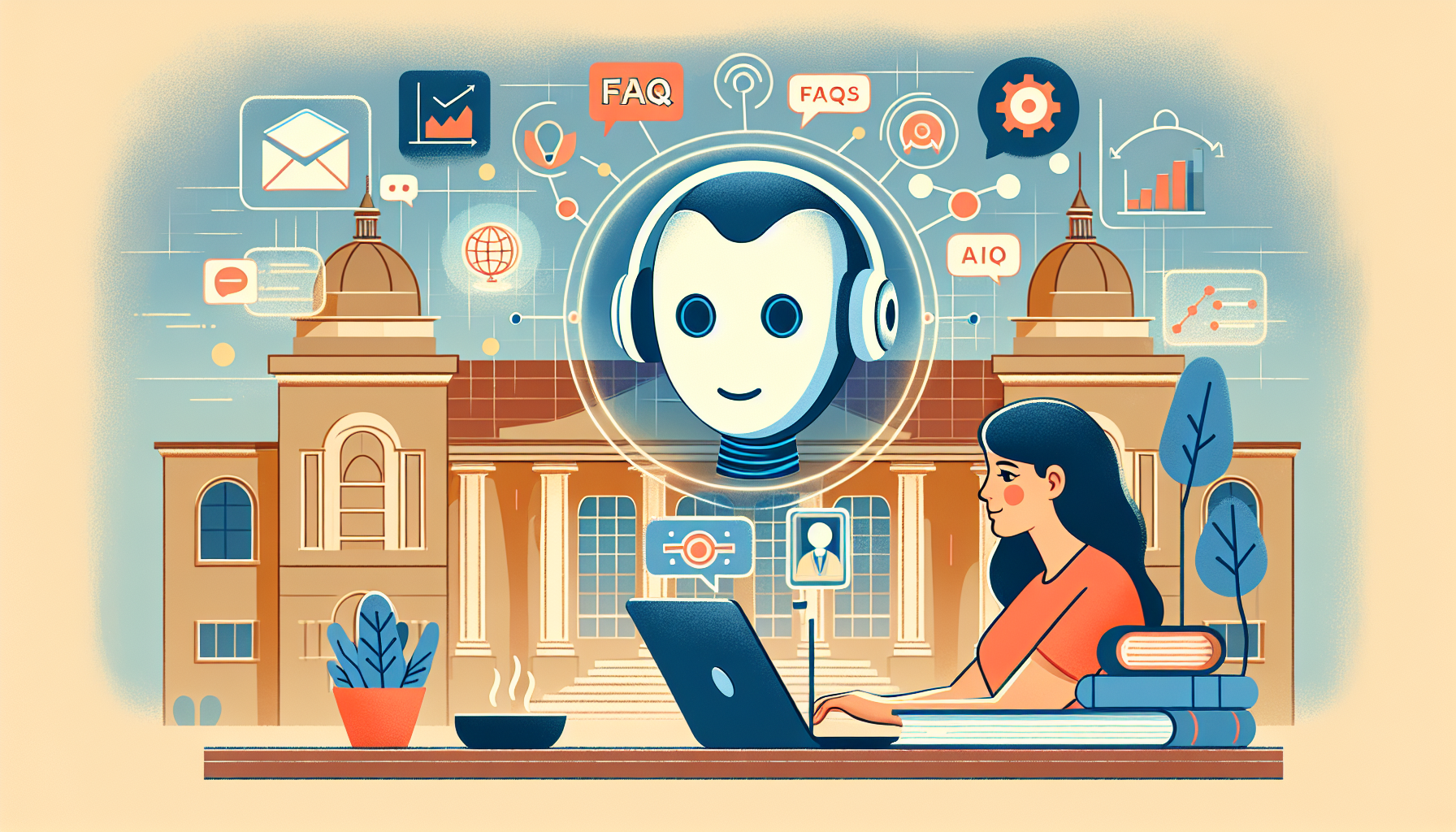Integrating AI in eLearning tools might sound a bit daunting, right? With so many options and tech jargon flying around, it’s easy to feel overwhelmed. You’re not alone in that boat—many educators and learners wonder where to begin or even if it’s worth the effort.
But here’s the good news: stick around, and I promise you’ll discover how simple and beneficial it can be to weave AI into your eLearning strategies. We’re talking about tools and techniques that can elevate your learning experience to new heights!
We’ll explore various ways to integrate AI, their benefits, and even the challenges you might face along the way. Plus, we’ll share some success stories to inspire you. Ready to dive in?
Key Takeaways
- Identify areas for AI enhancement, like personalized learning and chatbots.
- Utilize AI analytics for tracking student performance to enable quick intervention.
- Implement AI for automating tasks like grading to allow more student interaction.
- Leverage data insights to improve teaching strategies and course design.
- Start with clear objectives for AI integration to ensure effective implementation.
- Engage educators and students in the process for valuable feedback and insights.
- Be aware of challenges, such as data privacy and the need for ongoing training.

Ways to Integrate AI in eLearning Tools
Integrating AI into eLearning tools doesn’t have to be intimidating. Start by identifying areas where AI can enhance the learning experience, such as personalized learning, adaptive assessments, or even chatbots for student support.
One popular approach is incorporating AI-driven analytics to track student performance. This can give educators insights into which areas students struggle with the most, allowing for timely intervention.
Another method is using AI-powered recommendations to suggest additional resources or courses to students based on their learning behaviors and interests.
You might also consider integrating AI for automating administrative tasks. Think grading quizzes and managing paperwork—this can free up educators’ time to focus on student interaction.
Lastly, look into using AI-enhanced content creation tools. They can make developing engaging materials more efficient, ensuring your content stays relevant and interesting.
Benefits of Using AI in eLearning
So, what are the perks of infusing AI into your eLearning solution? For starters, personalized learning experiences can cater to individual student needs, adapting materials to pace and style.
AI also offers scalability; as your student base grows, AI can manage interactions and provide support without requiring a proportional increase in staff.
With automated assessments and feedback, learning becomes quicker and more immediate. Students benefit from getting information about their performance right when they need it, leading to faster improvement.
One of the biggest benefits is data insights. AI can help educators analyze trends in learning and engagement, which can inform the design of future lessons and improve instructional strategies.
Plus, who doesn’t love being able to access learning anytime and anywhere? AI makes it possible to enhance mobile learning tools, keeping education flexible and accessible.
Types of AI Technologies for eLearning
There are several types of AI technologies that can make a difference in eLearning. Machine learning algorithms can analyze vast amounts of data, helping in creating predictive models that forecast student performance.
Natural Language Processing (NLP) can assist in developing chatbots that engage students, answer their queries, and provide guidance as needed. Imagine a friendly bot available 24/7 to support learners.
Another notable technology is AI-based content creation tools. They can generate quizzes and interactive elements based on course material, making learning more engaging and adaptive.
Augmented and Virtual Reality (AR/VR), powered by AI, takes the learning experience to another level, providing immersive environments that students can interact with for practical understanding.
Finally, consider AI-driven platforms that analyze learning styles and preferences. These tools can tailor recommendations and resources, ensuring every student receives a unique learning journey.
Steps to Implement AI in eLearning Tools
Implementing AI in your eLearning tools requires a straightforward game plan. Start with defining your objectives—what do you hope to achieve with AI?
Next, conduct an assessment of your current systems to see where AI can fit in. This could involve evaluating your LMS and identifying integration points.
Then, choose the right AI technologies suited to your goals. Whether it’s chatbots, personalized content, or analytics tools, select the solutions that best align with your needs.
Once you’ve selected the tools, begin with a pilot project. Test it on a small group before rolling it out organization-wide. This helps to identify any potential issues early on.
Finally, gather feedback and be ready to adapt. AI is constantly evolving, and being receptive to changes ensures your eLearning tools remain effective and relevant.

Challenges of Integrating AI in eLearning
While AI holds incredible potential, integrating it into eLearning is not without its hurdles.
A significant challenge is the lack of understanding about AI among educators and administrators. Many may feel overwhelmed or unsure about how to effectively implement these technologies.
Another challenge is data privacy. With AI systems often requiring personal data to function optimally, ensuring compliance with regulations like GDPR becomes crucial.
Integration costs can also be a barrier. Smaller institutions may struggle with the financial investment needed for AI tools and training.
Furthermore, there is the risk of over-reliance on technology. If educators lean too heavily on AI, they might neglect the importance of human interaction in teaching.
Lastly, maintaining updated knowledge on rapidly changing AI technologies can be daunting for institutions. Staying informed is key to harnessing AI’s full potential.
Best Practices for AI in eLearning
To make the most of AI in eLearning, a strategic approach is essential.
First, always start with clear objectives. Know what you want to achieve and select AI tools that align with those goals.
Involve educators and stakeholders early in the process. Their feedback can provide valuable insights that can shape the implementation plan.
Emphasize continuous training. Providing ongoing support helps educators feel more comfortable using AI tools and encourages them to explore new features.
Testing on a small scale before a full rollout is vital. This allows for troubleshooting and adjustments based on real feedback.
Lastly, engage with students. Their experiences and suggestions can guide enhancements and improvements in the AI-driven eLearning environment.
Future of AI in eLearning Tools
The future of AI in eLearning is bright and full of possibilities.
We can expect to see even more personalized learning experiences, thanks to AI’s growing capabilities in understanding individual student needs.
AI will continue to enhance predictive analytics, allowing educators to proactively address students’ challenges before they become significant issues.
Improved interoperability between AI systems and existing Learning Management Systems (LMS) will make integration smoother and more effective.
Moreover, the use of Virtual Reality (VR) and Augmented Reality (AR) powered by AI will likely redefine practical learning experiences.
All in all, as technology advances, the role of AI in education will ensure learning is engaging, flexible, and tailored to each student, creating a more vibrant educational landscape.
Case Studies of Successful AI Implementation in eLearning
Looking at successful case studies can provide inspiration and insight for others considering AI in eLearning.
For example, one university integrated AI chatbots, which handled FAQs and administrative tasks for students. This move resulted in a 30% reduction in response time, leading to higher student satisfaction.
Another example is a language learning app that uses AI to personalize lessons based on user performance. This adaptive learning model significantly increased user engagement and retention rates.
A large corporation implemented AI-driven analytics to help assess employees’ training needs. The insights gained tailored training programs, which resulted in a boost in employee productivity.
These examples illustrate not just the effectiveness of AI but also its potential to create value in diverse education-related settings.

Case Studies of Successful AI Implementation in eLearning
Looking at successful case studies can provide inspiration and insight for others considering AI in eLearning.
For example, one university integrated AI chatbots, which handled FAQs and administrative tasks for students. This move resulted in a 30% reduction in response time, leading to higher student satisfaction.
Another example is a language learning app that uses AI to personalize lessons based on user performance. This adaptive learning model significantly increased user engagement and retention rates.
A large corporation implemented AI-driven analytics to help assess employees’ training needs. The insights gained tailored training programs, which resulted in a boost in employee productivity.
These examples illustrate not just the effectiveness of AI but also its potential to create value in diverse education-related settings.
I
FAQs
Integrating AI in eLearning tools enhances personalized learning experiences, improves engagement through interactive content, automates administrative tasks, and provides valuable analytics and insights for both learners and educators.
Common AI technologies in eLearning include natural language processing (NLP), machine learning algorithms, chatbots for support, and adaptive learning systems that personalize content based on user behavior and progress.
Challenges include high implementation costs, data privacy concerns, the need for technical expertise, integration with existing systems, and resistance to change from educators and learners.
Best practices include conducting needs assessments, ensuring data security, engaging stakeholders, continuous evaluation and feedback, and choosing user-friendly AI tools that complement existing educational methodologies.
